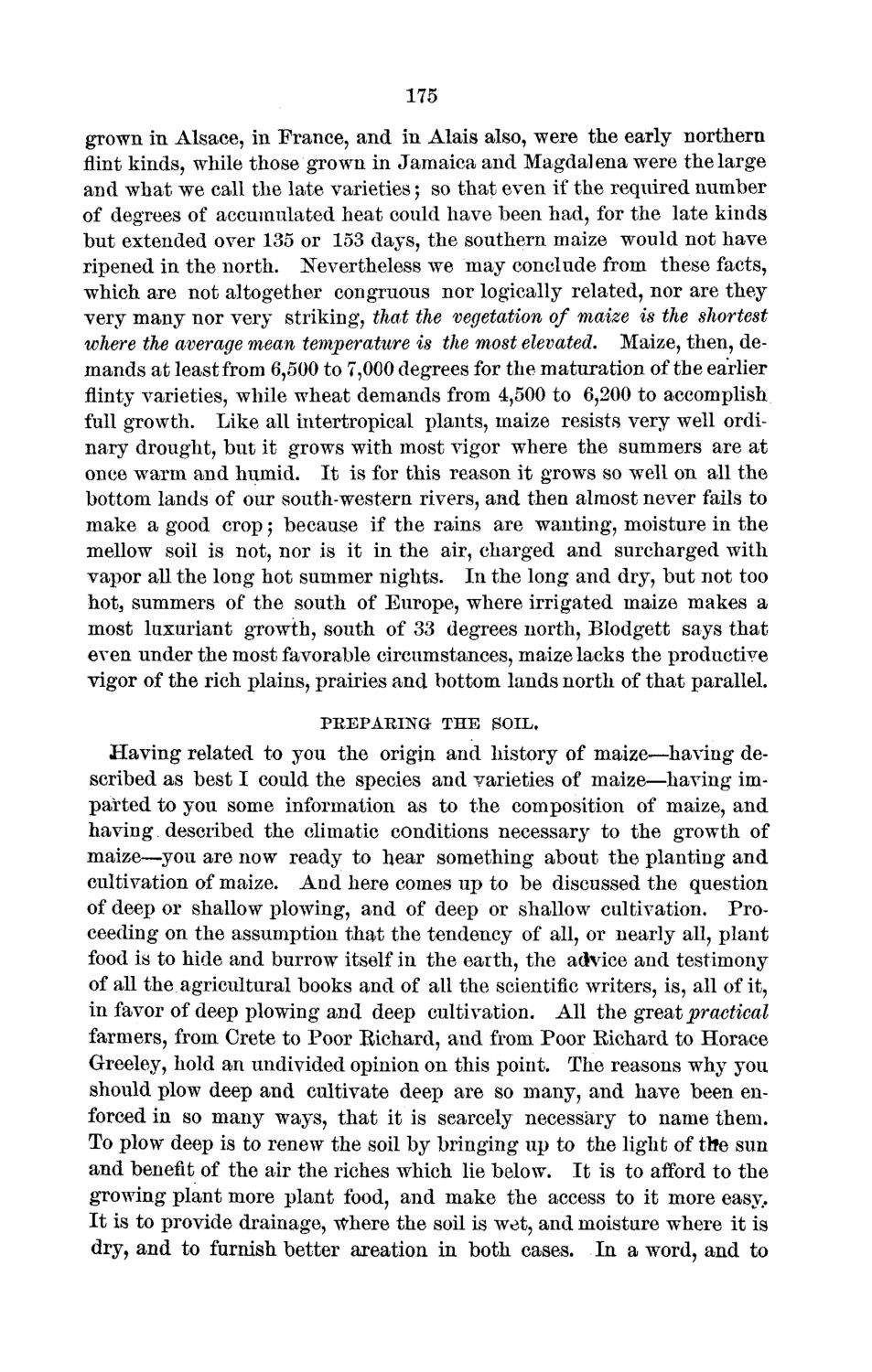| |
| |
Caption: Board of Trustees Minutes - 1872
This is a reduced-resolution page image for fast online browsing.

EXTRACTED TEXT FROM PAGE:
175 grown in Alsace, in France, and in Alais also, were the early northern flint kinds, while those grown in Jamaica and Magdalena were the large and what we call the late varieties; so that even if the required number of degrees of accumulated heat could have been had, for the late kinds but extended over 135 or 153 days, the southern maize would not have ripened in the north. Nevertheless we may conclude from these facts, which are not altogether congruous nor logically related, nor are they very many nor very striking, that the vegetation of maize is the shortest where the average mean temperature is the most elevated. Maize, then, demands at least from 6,500 to 7,000 degrees for the maturation of the earlier flinty varieties, while wheat demands from 4,500 to 6,200 to accomplish full growth. Like all intertropical plants, maize resists very well ordinary drought, but it grows with most vigor where the summers are at once warm and humid. It is for this reason it grows so well on all the bottom lands of our south-western rivers, and then almost never fails to make a good crop$ because if the rains are wanting, moisture in the mellow soil is not, nor is it in the air, charged and surcharged with vaj)or all the long hot summer nights. In the long and dry, but not too hot3 summers of the south of Europe, where irrigated maize makes a most luxuriant growth, south of 33 degrees north, Blodgett says that even under the most favorable circumstances, maize lacks the productive vigor of the rich plains, prairies and bottom lands north of that parallel. PREPARING THE BOIL, Having related to you the origin and history of maize—having described as best I could the species and varieties of maize—having imparted to you some information as to the composition of maize, and having described the climatic conditions necessary to the growth of maize—you are now ready to hear something about the planting and cultivation of maize. And here comes up to be discussed the question of deep or shallow plowing, and of deep or shallow cultivation. Proceeding on the assumption that the tendency of all, or nearly all, plant food is to hide and burrow itself in the earth, the advice and testimony of all the agricultural books and of ail the scientific writers, is, all of it, in favor of deep plowing and deep cultivation. All the great practical farmers, from Crete to Poor Richard, and from. Poor Eichard to Horace Greeley, hold an undivided opinion on this point. The reasons why you should plow deep and cultivate deep are so many, and have been enforced in so many ways, that it is scarcely necessary to name them. To plow deep is to renew the soil by bringing up to the light of tlte sun and benefit of the air the riches which lie below. It is to afford to the growing plant more plant food, and make the access to it more easy. It is to provide drainage, where the soil is wet, and moisture where it is dry, and to furnish better areation in both cases. In a word, and to
| |